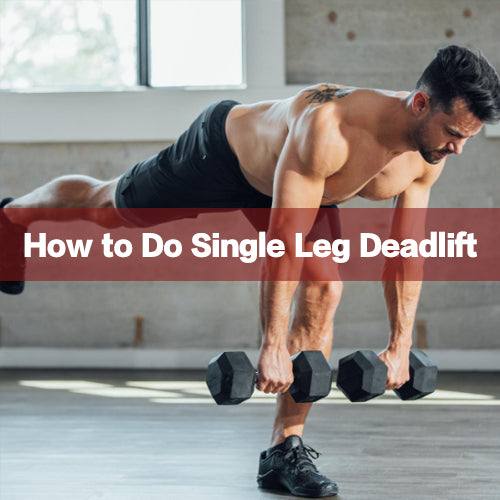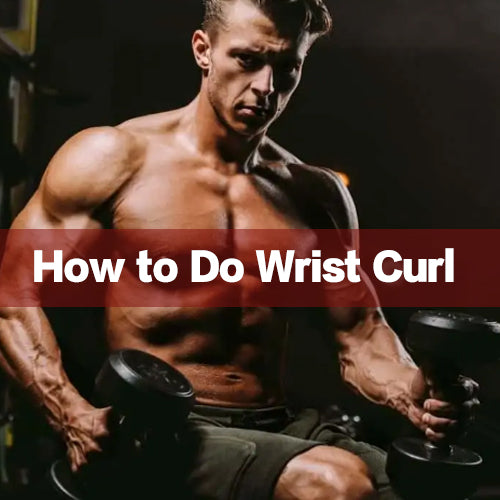
The fitness world is full of different exercises that target specific muscles, and the Bulgarian Split Squat is one of my favorites for building leg strength and stability. Whether you’re an athlete trying to get better at your sport or just someone who wants nice-looking legs, this move should be in your routine. In this ultimate guide I’m going to cover everything there is to know about Bulgarian split squats – what they are, why they’re good for you, how to do them right (with alternative), and when/where you should include them in your training program.
What is a Bulgarian Split Squat?
The Bulgarian Split Squat, often referred to simply as the "Bulgarian Squat," is a single-leg squat variation that hails from Bulgaria, hence its name. This exercise targets the muscles of the lower body, including the quadriceps, hamstrings, glutes, and calves, with a strong emphasis on stability and balance.
How is it Different From a Single-Leg Squat?
The Bulgarian split squat and single-leg squat are both unilateral leg exercises, meaning they work one leg at a time.
Bulgarian Split Squat:
- Rear foot elevated
- Emphasis on front leg quadriceps
- Rear leg acts as stabilizer
Single-Leg Squat:
- Both feet on floor, one leg working
- Works entire working leg musculature evenly
- Requires more balance and core engagement
How to Do Bulgarian Split Squat?
Setup: Stand a few feet in front of a weight bench or sturdy surface. Place one foot behind you and rest the top of your foot on the bench.
Stance: Your front leg should be a step or two in front of the bench. The stance width can vary depending on your comfort, but generally, it's about hip-width apart.
Posture: Maintain an upright torso with your chest lifted and shoulders back. Engage your core muscles to support your spine.
Descent: Lower your body by bending your front knee. Keep your knee aligned with your ankle, ensuring it doesn't go past your toes. Aim to create a 90-degree angle with your front thigh parallel to the ground.
Ascent: Push through your front heel to return to the starting position. Fully extend your knee and hip, but avoid locking them out at the top.
Repetitions: Complete the desired number of repetitions for one leg, then switch to the other leg.
Breathing: Inhale as you lower your body and exhale as you rise.
Balance: Focus on balance throughout the movement. Use your rear foot on the bench to help stabilize yourself, but avoid pushing off it to assist with the lift.
Bulgarian Split Squat Muscles Worked

The Bulgarian Split Squat is a compound exercise that engages multiple muscle groups in the lower body and core. Here are the primary muscles worked during a Bulgarian Split Squat:
Quadriceps (Front Thigh Muscles): The quadriceps are heavily engaged during the Bulgarian Split Squat. These muscles are responsible for extending the knee and straightening the leg.
Gluteus Maximus (Buttocks): The glutes play a crucial role in stabilizing the hip joint and extending the hip during the upward phase of the movement.
Hamstrings (Back of Thigh Muscles): The hamstrings work eccentrically to control the descent and concentrically to assist with hip extension during the ascent.
Calves (Gastrocnemius and Soleus): The calf muscles provide stability and support during the movement, especially when rising onto the toes at the top of the squat.
Adductors (Inner Thigh Muscles): The adductor muscles help stabilize the hip joint during the exercise.
Erector Spinae (Lower Back Muscles): These muscles assist in maintaining an upright torso and proper spinal alignment throughout the squat.
Core Muscles: The core muscles, including the rectus abdominis and obliques, are engaged to stabilize the trunk and maintain an upright posture.
Stabilizer Muscles: Various stabilizer muscles around the hip and knee joints are activated to provide stability during the single-leg movement.
Gluteus Medius and Minimus: These muscles, located on the side of the hip, help control the lateral movement of the hip and maintain balance.
Tensor Fasciae Latae (TFL): The TFL assists in stabilizing the hip and knee joints during the Bulgarian Split Squat.
Benefits of Bulgarian Split Squats

Leg Strength
Bulgarian Split Squats are exceptional for developing leg strength, particularly in the quads and glutes. The single-leg aspect forces each leg to bear its load, intensifying the muscle engagement.
Improved Stability
This exercise challenges your balance and stability, which can lead to enhanced proprioception (awareness of your body's position in space) and a reduced risk of injury.
Functional Fitness
The movement of the Bulgarian Split Squat mimics real-life actions like climbing stairs, walking, or running. Training with this exercise can translate into improved functional fitness for daily activities.
Muscle Symmetry
By working each leg independently, you can identify and address strength imbalances between your left and right sides.
Variety
If you're seeking variety in your leg workouts, the Bulgarian Split Squat is a valuable addition. It offers a different stimulus compared to traditional squats and lunges.
6 Common Mistakes
Here are some common mistakes to avoid with the Bulgarian split squat:
1.Leaning Too Far Forward
Leaning your torso too far forward shifts the emphasis away from the quad and puts excessive strain on the lower back. Keep an upright torso position.
2.Elevated Foot Too High
Having your rear foot overly elevated on too high of a surface increases the range of motion beyond what's necessary, making the exercise unnecessarily difficult. Use a low box/bench height.
3.Trailing Leg Too Far Back
Positioning your trailing leg too far behind you can cause you to lean forward excessively. Keep it under your hips.
4.Restricted Front Knee Travel
Not allowing your front knee to travel forward enough limits the depth and quad engagement. Let that front knee come out over the toes.
5.Not Going Deep Enough
Only doing partial reps prevents you from working the full range of motion and quad stretch. Go down until the trailing knee nearly touches the floor.
6.Looking Down
Looking down rather than keeping your head neutral puts your spine out of alignment. Pick a spot to focus on ahead of you.
Nailing the proper upright torso position, front leg form, and range of motion is key to getting maximum quad activation from Bulgarian split squats. Use mirrors or record your form if needed.
Bulgarian Split Squat Alternative
Lunges

Forward lunges, reverse lunges, and lateral lunges are excellent alternatives. They work the quadriceps, glutes, hamstrings, and calves while also engaging the core and stabilizer muscles.
Step-Ups

Using a bench or sturdy platform, step-ups mimic the upward movement of the Bulgarian Split Squat. They strengthen the quads, glutes, and calves while improving balance and stability.
Leg Press

Leg press machines at the gym provide a controlled way to work the lower body, especially the quadriceps and glutes. You can adjust the weight to your fitness level.
Dumbbell or Barbell Squats

Traditional squats, whether with dumbbells or a barbell, engage the same muscle groups as the Bulgarian Split Squat but in a bilateral (two-legged) stance.
Single-Leg Deadlift

This exercise targets the hamstrings, glutes, and lower back while improving balance. Hold a dumbbell or kettlebell in one hand for added resistance.
Box Jumps

Box jumps work the lower body explosively, particularly the quadriceps, glutes, and calves. They also enhance power and agility.
Wall Sits

Although not a dynamic movement, wall sits are an isometric exercise that effectively engages the quadriceps, glutes, and calves while improving muscular endurance.
Split Squat with Smith Machine

Using the Smith machine, you can perform a split squat similar to the Bulgarian Split Squat. It allows for added stability and control.
Kettlebell Swings

This dynamic exercise targets the glutes, hamstrings, and lower back while also providing cardiovascular benefits. It's an excellent full-body workout.
Step Lunges
Combining elements of both step-ups and lunges, step lunges work the lower body and provide a balance challenge.
Choose the alternative that aligns with your fitness goals, equipment availability, and any specific needs or preferences you may have. Variety in your workout routine can help prevent plateaus and keep your training exciting.
Incorporating Bulgarian Split Squats into Your Routine
Including Bulgarian Split Squats in your workout routine can be a game-changer for your lower body strength and stability. Here's how you can do it:
Leg Day: Incorporate Bulgarian Split Squats into your leg day routine, performing 3-4 sets of 8-12 repetitions per leg.
Superset: Pair Bulgarian Split Squats with exercises like lunges, step-ups, or calf raises for a comprehensive lower body workout.
Strength Program: If you're following a structured strength program, consider including Bulgarian Split Squats as a compound leg exercise.
Active Recovery: Use this exercise on your active recovery days to work on stability and muscle balance.
Final Thoughts
The Bulgarian Split Squat is a potent exercise for building leg strength, enhancing balance, and promoting functional fitness. It's an ideal addition to your lower body training arsenal, offering variety and targeting specific muscle groups with precision. Whether you're a seasoned athlete or just starting your fitness journey, the Bulgarian Split Squat has something to offer everyone. So, step up to the challenge, and reap the rewards of stronger, more stable legs.
FAQs
What muscles does the Bulgarian split squat work?
The Bulgarian split squat is a quad-dominant exercise that heavily targets the quadriceps of the front leg. It also works the glutes, hamstrings, and calves of the front leg to a lesser degree while the rear leg acts as a stabilizer.
Why is it called the "Bulgarian" split squat?
It's called the Bulgarian split squat because the exercise originated from Bulgarian Olympic weightlifting coaches who used it to improve strength and muscle quartets.
What's the proper foot position?
For the front foot, you want it roughly under your hip with toes pointing forward. The rear foot should be elevated with laces down and toes pointed back behind you.
How low should I go?
Descend until the rear knee nearly touches the floor while keeping your torso upright. Going too high defeats the purpose of getting a full stretch in the quads.
Should I alternate legs each rep?
You can do all reps on one leg, then switch. Or alternate legs every rep, standing up fully in between reps. Both methods have benefits.
What surface should my rear foot be on?
Plyometric box, aerobic step, bench, or any sturdy elevated surface around knee height works well for the rear foot position.
Is it better than a normal split squat?
The Bulgarian variation tends to better target the quadriceps versus a conventional split squat where you have both feet on the floor.
How heavy should I go?
Use a challenging weight that allows you to hit parallel depth with good form. Dumbbells, kettlebells, or holding a barbell across your back are options.


